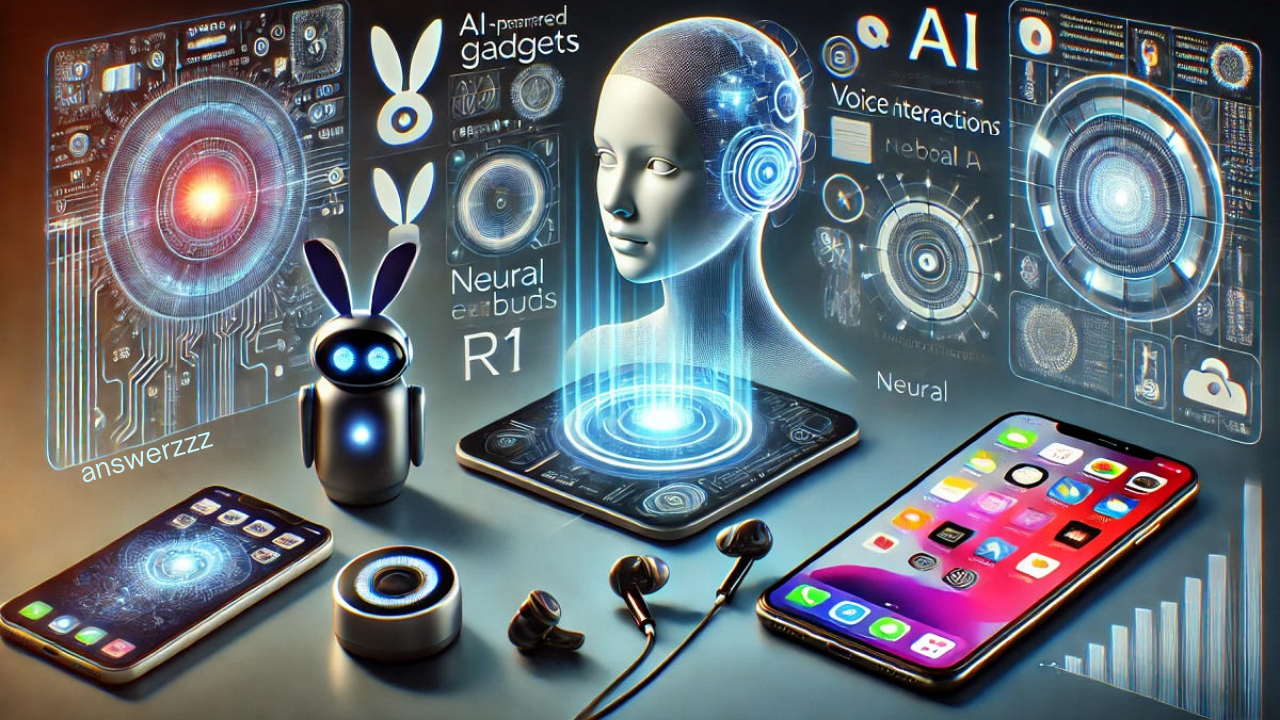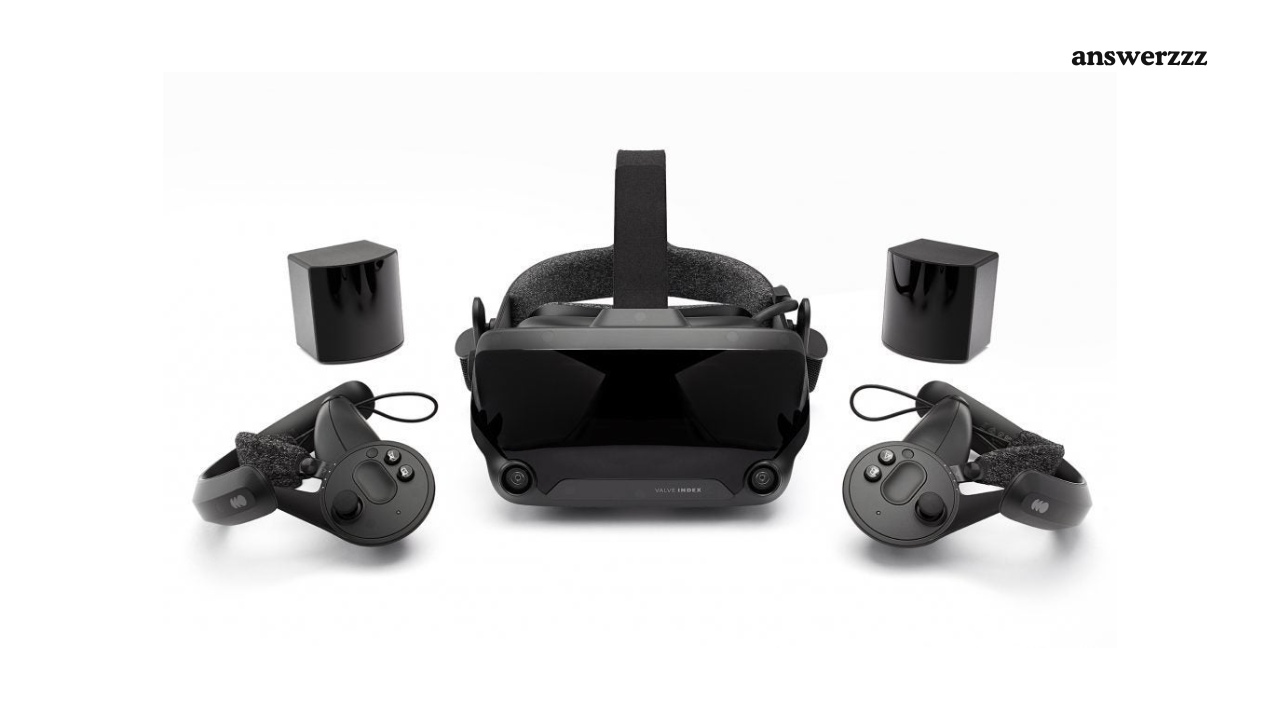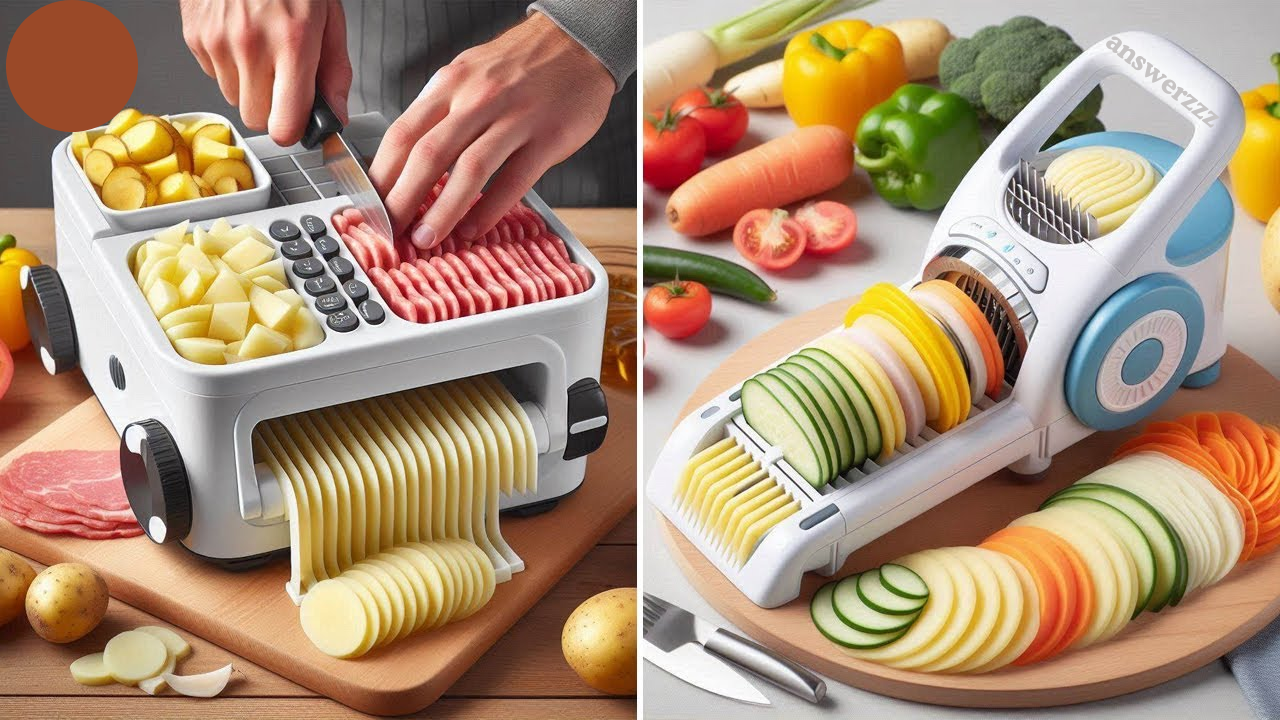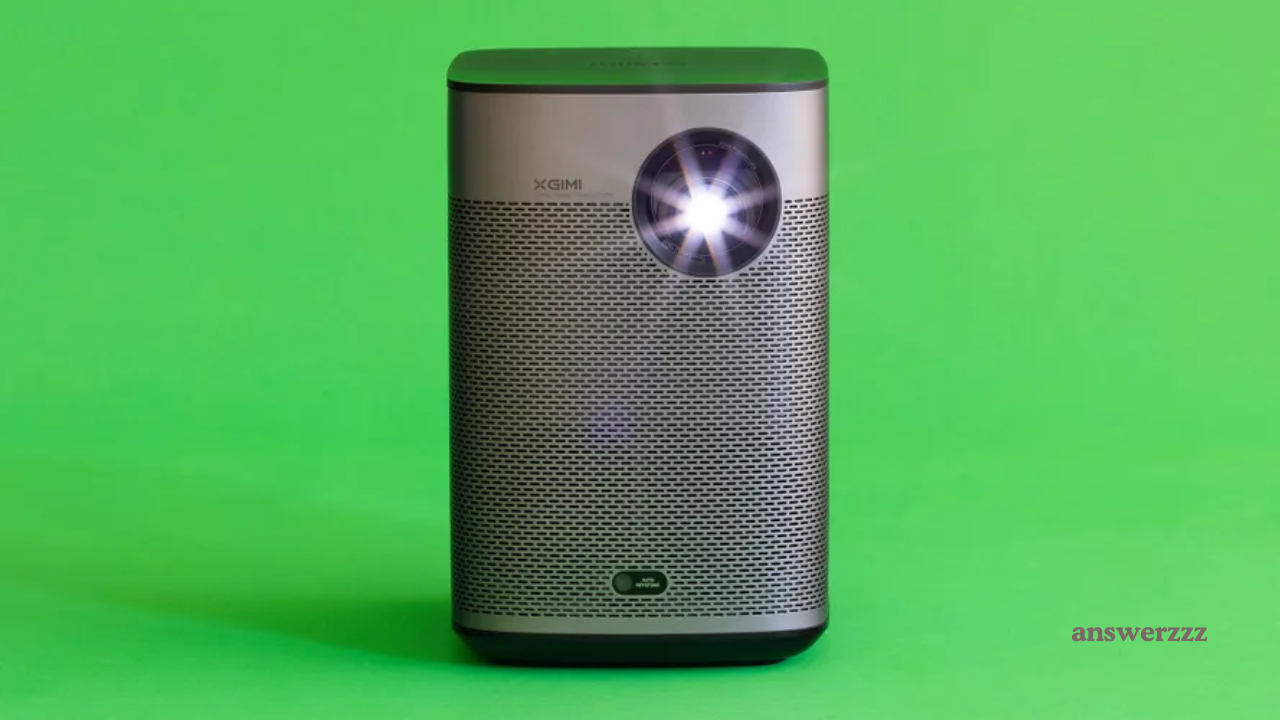Artificial Intelligence (AI) has rapidly evolved over the past few decades, going from a theoretical concept to a driving force in modern technology. Today, AI-powered gadgets are transforming every aspect of our lives, from how we communicate to how we manage our homes and workspaces. These gadgets, which once seemed like science fiction, are now an essential part of the technology ecosystem, revolutionizing industries, businesses, and consumer experiences. In this article, we will explore the rise of AI-powered gadgets, how they are reshaping the future of tech, and what we can expect in the coming years.
Understanding AI and its Impact on Technology
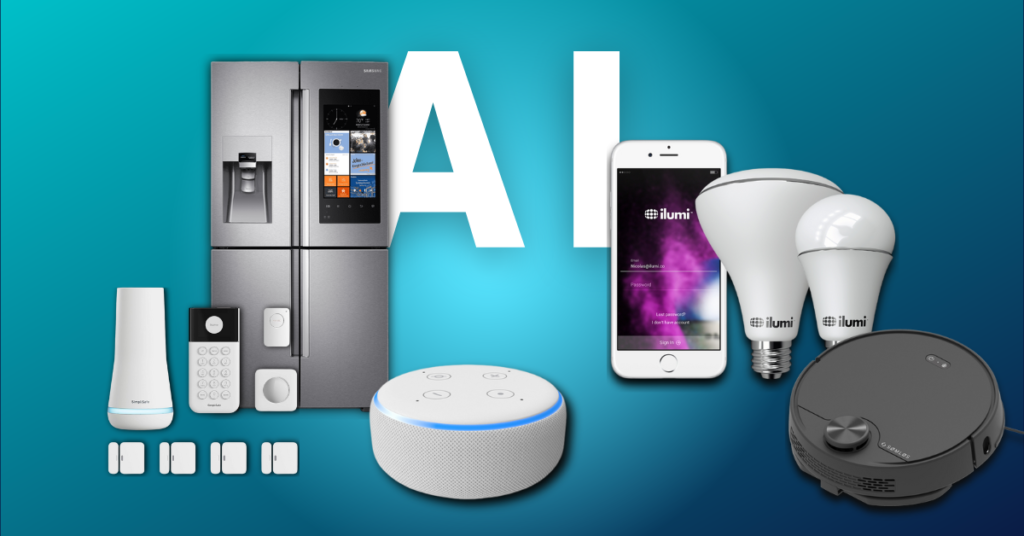
Artificial Intelligence, at its core, refers to the simulation of human intelligence in machines that are programmed to think, learn, and make decisions. AI systems are designed to mimic human cognitive functions such as problem-solving, pattern recognition, speech and language processing, and decision-making. The integration of AI into gadgets has significantly enhanced their capabilities, enabling them to perform tasks that were once only possible for humans.
As AI technology has advanced, it has become more accessible and affordable, allowing manufacturers to integrate AI into a wide range of consumer gadgets. From smartphones to smart speakers, wearables, and home automation systems, AI has become the backbone of many modern devices. AI-powered gadgets are transforming industries such as healthcare, automotive, entertainment, and home automation, promising improved user experiences, higher efficiency, and enhanced functionality.
AI-Powered Smartphones: The Brain Behind the Device
Smartphones have come a long way since their inception, and AI is playing a significant role in their evolution. Modern smartphones are equipped with AI-powered features that enhance user experience, improve performance, and enable smarter interactions. AI algorithms are used to optimize battery life, enhance camera quality, provide personalized recommendations, and improve voice recognition.
One of the most notable AI-driven advancements in smartphones is the use of machine learning in camera systems. AI algorithms enable cameras to recognize scenes and adjust settings for optimal image quality. For instance, the AI in a smartphone camera can automatically detect faces, enhance lighting, and reduce noise, resulting in better photos and videos.
Additionally, AI is utilized in voice assistants like Siri, Google Assistant, and Alexa, which are integrated into smartphones. These AI-powered assistants can understand natural language, interpret commands, and provide relevant information based on context. As AI continues to evolve, voice assistants are becoming more intuitive and capable of handling complex tasks, from setting reminders to controlling smart home devices.
Top Gadgets for Productivity: Boost Your Efficiency with These High-Tech Tools
AI-Powered Smart Home Gadgets: A New Era of Automation
The concept of a smart home has become a reality, with AI-powered gadgets leading the charge in creating a more connected, efficient, and comfortable living environment. From smart thermostats to voice-activated assistants, AI is revolutionizing how we interact with our homes.
Smart thermostats like the Nest Learning Thermostat use AI to learn users’ preferences and adjust the temperature accordingly. These devices can analyze patterns in behaviour, such as when the home is empty or when family members are typically home, and automatically adjust the temperature for optimal comfort and energy efficiency. Over time, the system “learns” the household’s habits, becoming more intelligent and efficient.
AI-powered voice assistants such as Amazon Alexa, Google Assistant, and Apple HomePod are also central to the smart home revolution. These devices can control various aspects of the home, including lighting, temperature, entertainment systems, and security. AI allows voice assistants to understand commands more accurately, manage multiple tasks simultaneously, and even respond to contextual cues, making them more intuitive and effective.
Additionally, AI is making its way into smart appliances, such as refrigerators, washing machines, and ovens. These gadgets can optimize performance based on usage patterns, alert users to potential maintenance needs, and even suggest recipes based on the contents of the fridge. In the future, AI-powered appliances will continue to evolve, becoming more autonomous and responsive to users’ needs.
Wearables and Health Tech: Revolutionizing Personal Care

AI-powered wearables are another area where artificial intelligence is making a significant impact. Devices like smartwatches, fitness trackers, and health-monitoring gadgets are now capable of providing users with real-time insights into their health and well-being. These gadgets are equipped with sensors that track vital signs, physical activity, sleep patterns, and more.
One of the most popular AI-powered wearable gadgets is the Apple Watch, which uses AI to monitor heart rate, track workouts, and detect irregularities in the user’s heart rhythm. In case of an emergency, the watch can even alert emergency services and share the user’s location. With advanced AI algorithms, wearables can offer personalized fitness recommendations, monitor stress levels, and even track mental health, providing users with a holistic view of their health.
Other health-focused gadgets, such as continuous glucose monitors (CGMs), are also utilizing AI to provide more accurate and actionable data for individuals with chronic conditions like diabetes. AI can analyze glucose trends, predict future spikes or drops, and suggest interventions, empowering users to make informed decisions about their health.
As AI-powered wearables continue to improve, they will offer even more advanced features, such as early detection of health issues, real-time diagnostics, and personalized treatment plans. The integration of AI in health tech is making it easier for individuals to take control of their health and well-being.
AI in the Automotive Industry: Smarter, Safer Vehicles
AI-powered gadgets are also making a significant impact on the automotive industry, particularly in the development of autonomous vehicles and advanced driver-assistance systems (ADAS). AI is helping cars become smarter, safer, and more efficient.
Autonomous vehicles, also known as self-driving cars, rely on AI to navigate and make decisions on the road. These vehicles use sensors, cameras, and machine learning algorithms to detect obstacles, interpret traffic signals, and make real-time decisions about speed, braking, and steering. AI allows these vehicles to learn from their surroundings and improve over time, making them safer and more reliable.
Even in non-autonomous vehicles, AI is enhancing safety through features like adaptive cruise control, lane-keeping assistance, and collision detection. These AI-powered systems use real-time data to assist drivers and reduce the likelihood of accidents. For instance, if a car detects that the driver is drifting out of their lane, the system can gently steer the vehicle back into the centre of the lane.
In addition to safety, AI is also improving vehicle performance by optimizing fuel efficiency, reducing emissions, and providing predictive maintenance alerts. Over time, as AI technology advances, we can expect more vehicles to become fully autonomous, transforming the way we drive and interact with our cars.
Eco-Friendly Gadgets: Sustainable Tech Innovations to Reduce Your Carbon Footprint
AI in Entertainment and Gaming: Immersive Experiences
Artificial intelligence is also making waves in the entertainment and gaming industries, offering users more immersive and personalized experiences. AI-powered gadgets in these sectors are enhancing how we consume content, play games, and engage with virtual environments.
In gaming, AI is being used to create more dynamic and challenging experiences. AI-driven characters and enemies can adapt to the player’s skill level, providing a more engaging and unpredictable gaming experience. Additionally, AI is being used to create realistic environments, with algorithms generating procedural content, such as landscapes and game worlds, based on the player’s actions.
In the realm of entertainment, AI is revolutionizing how we consume content. Streaming platforms like Netflix, Hulu, and Spotify use AI algorithms to recommend movies, TV shows, and music based on users’ preferences and viewing habits. These algorithms continually learn from user behaviour, improving recommendations over time and offering personalized content curation.
Virtual reality (VR) and augmented reality (AR) technologies are also incorporating AI to create more immersive experiences. In VR, AI is used to create realistic interactions with virtual characters and environments, while in AR, AI enables objects in the real world to interact with virtual elements, enhancing the user experience.
The Future of AI-Powered Gadgets: What’s Next?

As AI technology continues to advance, the possibilities for AI-powered gadgets are endless. We can expect smarter, more efficient devices that can predict our needs, adapt to our preferences, and make decisions in real time. Here are some trends we can expect to see in the future:
1. Smarter AI Assistants
AI-powered voice assistants will become even more intuitive, understanding complex commands, multi-step tasks, and context-specific responses. They will seamlessly integrate with all aspects of our lives, from managing our schedules to controlling our homes and workspaces.
2. AI in Healthcare
The integration of AI in healthcare gadgets will continue to expand, with more advanced diagnostics, real-time monitoring, and personalized treatment options. AI will play a key role in preventative healthcare, helping individuals detect potential health issues before they become serious.
3. Fully Autonomous Vehicles
Self-driving cars will become more common, with AI enabling vehicles to navigate complex environments and make decisions with high levels of accuracy. These vehicles will be safer, more efficient, and more environmentally friendly.
4. AI in Robotics
AI will continue to enhance robotics, making robots smarter, more autonomous, and capable of performing a wider range of tasks. From household robots to industrial automation, AI will drive the future of robotics.
Unveiling the Future of Smartphones: What to Expect from Next-Gen Devices
AI-powered gadgets are not just a passing trend; they represent the future of technology. From smartphones to wearables, and smart home devices to autonomous vehicles, AI is revolutionizing how we interact with the world around us. As AI technology continues to evolve, we can expect even more advanced, personalized, and intelligent devices that will enhance our lives in ways we can only begin to imagine. The rise of AI-powered gadgets is shaping the future of tech, and the possibilities are truly limitless.
